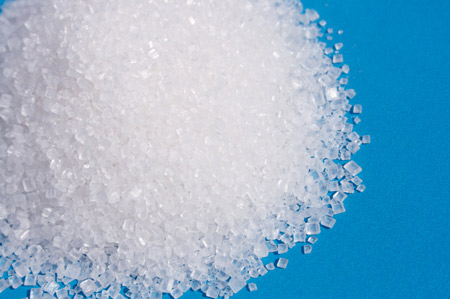UPDATE 1-Low prices mean highest U.S. sugar subsidy cost in decade
Category: Sugar
 (Reuters) – The United States faces its highest sugar subsidy cost since 2000, an estimated $280 million, following a new wave of defaults by processors on government-backed loans.
(Reuters) – The United States faces its highest sugar subsidy cost since 2000, an estimated $280 million, following a new wave of defaults by processors on government-backed loans.
Nearly 382,000 tons were forfeited in the final two months of fiscal 2013, despite repeated Agriculture Department efforts to whittle down a mammoth surplus and bolster futures prices. The surplus was projected to persist for months to come.
The USDA said on Thursday that 296,500 tons were forfeited at the end of September, broadly in line with trade expectations, on top of 85,375 tons forfeited at the end of August.
Due to low prices, processors ceded the sugar, which had been pledged as collateral, to the government rather than repay price support loans.
The forfeitures amounted to roughly 4 percent of the 9 million tons of sugar produced during 2013. The USDA said sugar prices fell more than 30 percent in the past year because of huge crops worldwide. U.S. growers also blame large imports from Mexico.
“We had expectations for bad things happening and they were fulfilled. It just indicates that we have a glut and that is still a problem for the U.S. sugar market,” said Sterling Smith, a futures specialist with Citigroup in Chicago. “This puts a lot of sugar in the hands of the USDA.”
It was unclear if the USDA announcement of the forfeitures would bolster U.S. sugar prices, which are up over 16 percent since the end of June. The front-month No. 16 domestic raw sugar contract on ICE Futures U.S. closed up 0.2 percent at 22.12 cents a pound on Thursday.
Analysts estimated the sugar subsidy program would cost $280 million for 2013, the highest price tag since $465 million in 2000, during another period of surpluses.
The USDA was likely to move aggressively to dispose of the surplus sugar, said two analysts who spoke on condition of anonymity. They said the government could sell sugar to ethanol makers and barter it for re-export credits as a way to reduce the sugar supply.
Although costs spiked this year at the same time Congress was writing a new farm bill, lawmakers are not expected to change the program, which is supposed to run at no cost to taxpayers and usually does.
The sugar program assures a minimum price for sugar to U.S. growers. The USDA limits sugar imports and has authority to regulate domestic marketing of sugar in order to provide the price guarantee to growers and limit the cost to taxpayers.
In its efforts to reduce the surplus, the USDA for the first time used the Feedstock Flexibility Program to sell surplus sugar at a loss to ethanol makers. The sugar-for-ethanol program removed more than 143,000 tons from the market.
The sugar supply was reduced by an additional 608,000 tons, the USDA said, when it traded sugar to retire credits that allow refiners to bring sugar into the country for processing and re-export.
American Crystal Sugar Co said it defaulted on $46.6 million in sugar loans at the end of September, about half of the quantity it had under USDA loans.
“The decision to forfeit is never an easy one. It’s always a reflection of the market at the time, and the market is very poor. The decision was logical from a business standpoint,” said Kevin Price, director of government affairs for American Crystal Sugar.
Price said it was “hard to say” whether the forfeitures would be taken as a bullish sign and boost futures prices.




